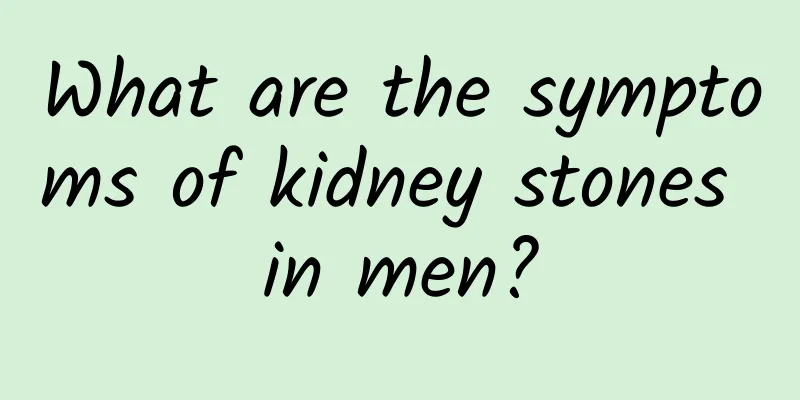What are the symptoms of kidney stones in men?

|
Everyone may be familiar with kidney stones, which are a very common disease. Many people may not know much about the symptoms of kidney stones. According to research, the symptoms of kidney stones include hematuria, pain, etc. Understanding these symptoms will help us detect the disease early, which is beneficial to the treatment of the disease and the recovery of the body. Let's take a look at the specific symptoms of kidney stones. 1. Frequent urination and painful urination. When stones are accompanied by infection, there may be symptoms such as frequent urination and painful urination. When acute pyelonephritis or nephrostomy occurs, there may be systemic symptoms such as fever, chills, and shivering. 2. Renal colic. When stones cause complete obstruction of the ureteropelvic junction or ureter, renal colic occurs. The pain is severe and unbearable, and is paroxysmal. The patient is restless, sweats, and has nausea and vomiting. The location and radiation range of pain vary depending on the location of stone obstruction. When the ureteropelvic junction or upper ureter is obstructed, the pain is located in the waist or upper abdomen, and radiates along the ureter to the testicle or labia and inner thigh on the same side. 3. Microscopic hematuria. When the middle section of the ureter is obstructed, the pain radiates to the middle and lower abdomen, and the right side is easily confused with acute appendicitis. The stone is located in the ureteral bladder wall section or the ureteral orifice, often accompanied by bladder irritation symptoms and radiating pain in the urethra and penis head. Depending on the degree of mucosal damage caused by the stone, it can manifest as macroscopic or microscopic hematuria. The latter is more common. Sometimes microscopic hematuria after activity is a clinical manifestation of upper urinary tract stones. 4. Hematuria and pain. The main symptoms of kidney stones are hematuria and pain related to movement. The degree of pain is related to factors such as the location, size, movement, and presence and degree of complications. The smaller the stone, the more obvious the symptoms. Large stones in the renal pelvis and renal calyx stones may have no obvious clinical symptoms, only hematuria under the microscope after movement. If the stone causes obstruction of the renal calyx neck, or the renal pelvis stone does not move much, it may cause dull pain in the upper abdomen or waist. 5. Anuria. Bilateral upper urinary tract stones can cause complete obstruction on both sides or complete obstruction on one kidney. Sometimes infection symptoms are manifestations of urinary tract stones. Especially for children with upper urinary tract stones, most of them manifest as urinary tract infection, which is worth noting. |
<<: What are the symptoms of male trichomonal vaginitis?
>>: What are the symptoms of scrotal eczema?
Recommend
The main reasons for the red spots on the glans
The glans penis is a part of the male reproductiv...
“Snoring like thunder”: Beware of hidden health risks
Some people think that "snoring loudly"...
What are the common symptoms of chocolate cyst pain?
In life, when it comes to many issues involving t...
What is the cause of frequent ejaculation?
What is the reason for frequent spermatorrhea? Sp...
What is ejaculation dysfunction?
We all know that ejaculation is a normal physiolo...
What does it mean when a man is yin-deficient?
Which man loves me and wants me to be energetic a...
Red spots on the glans after drinking
Men are more likely to suffer from balanitis, and...
Healthy ways to lose weight on men's chest
In this world, both men and women have high requi...
What causes itching in the male urethra?
If a man has itching at the urethral opening, he ...
My brother can't get an erection
When the penis is sexually stimulated, the cavern...
What kind of women do men born in the year of the Tiger like?
Chinese fortune-telling, feng shui, and zodiac st...
Is the male penis too sensitive? This is a disease and needs to be treated!
If a man's penis is too sensitive, he will ha...
At what age do men experience spermatorrhea?
There is no actual age limit for male spermatorrh...
Pay attention to anal cramps, it may be spastic anorectal
With the development of society, people are under...
How many sperm can a man produce in his lifetime?
Do you know how many sperm a man can produce in h...









